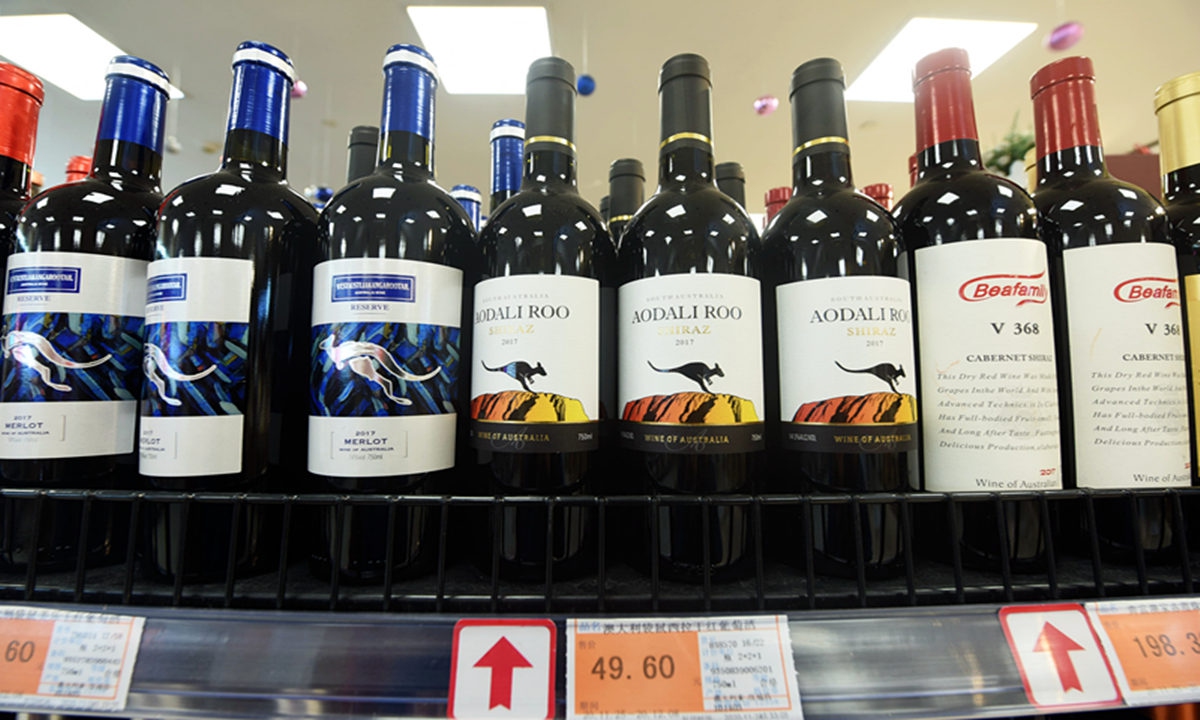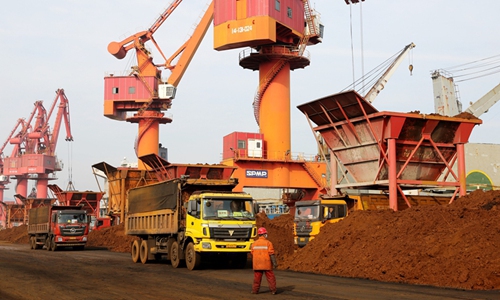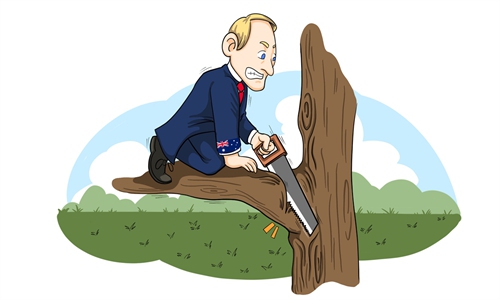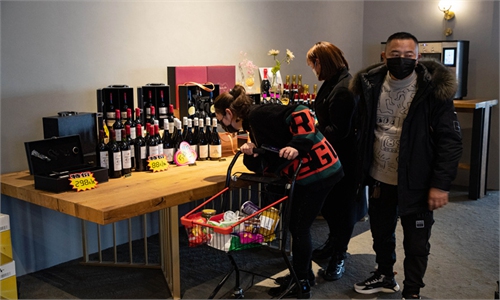Australian wines try to stay in China through cooperation with local vineyards
Competition darkens outlook of new business model

Bottles of Australian wine on the shelf of a supermarket in Hangzhou, East China's Zhejiang Province on November 27, 2020 Photo: VCG
Top Australian winemakers are busy seeking cooperation with Chinese partners in terms of technology and investment, as well as building their own chateaux in China, in an attempt to fend off the impact of hefty anti-dumping duties and stay in the Chinese market where they see the greatest potential for growth.
The Australian wine business in China has come across what could be the biggest hurdle in decades with anti-dumping measures that raised tariffs with the maximum rate of 218.4 percent in one of their largest markets, and the new business model may not be able to help due to stiff competition, experts said.
Amid great losses, some Australian wine companies, including top industry players, have come up with contingency plans such as seeking brand cooperation with original equipment manufacturers and investing in chateaux in Northeast China, where the winery industry is booming.
Australian leading wine brand Treasury Wine Estates (TWE)'s top managers reportedly visited wineries in Northwest China's Ningxia Hui Autonomous Region in mid-May, seeking such cooperation opportunities.
That immediately captured industry insiders' attention, as the move was regarded as a possible new trend for Australian businesses to enter the Chinese market, after the tariffs went into effect.
A staffer surnamed Li at Qinghai Baojialong chateau, one of the vineyards that the Australian company reportedly visited, told the Global Times on Monday that some Australian winemakers visited a month ago, without identifying the company.
"They toured our plantation, production line and were interested in the local government's support policies for wineries," Li said.
TWE and Accolade Wines, another top Australian winemaker, has also reportedly sought cooperation in China. The company did not respond to a Global Times request for comment as of press time.
While very few Australian wines are now being exported directly to China because of the anti-dumping duties, some wine tycoons from countries including Australia have acquired or built their own wineries in China.
A manager with a large Australian wine exporter that used to ship more than 100 containers of wine to China a year told the Global Times on condition of anonymity that the company is changing its business model because the duties make it impossible to export at a profit.
In an effort to maintain share in what he called the market with the biggest potential, he built a chateau in Ningxia late last year and more investments are to follow.
But since building a winery takes relatively long time, a faster way for some is to entrust Ningxia wineries with production and processing.
A person familiar with the matter told the Global Times on Monday that Australian winemakers can provide technology and quality control, while the Chinese side provides the rest, including the raw materials and the whole production line.
"But in the end, the wine is to be branded with the Australian company's logo on the bottle," said the person.
Huo Xingsan, secretary general of the Wine Branch of the China Alcoholic Drinks Association (CADA), said that this practice can be a possible trend for Australian winemakers.
"The target of China's anti-dumping move is wine products of Australian origin, and many of Australia's wine brands are multinationals," Huo said.
Despite these moves by Australian winemakers, industry insiders said that this would not be easy, since the rising potential of the Chinese wine market has turned it into one of the world's most competitive, while the new business model needs the test of time.
With this kind of cooperation, the wines are made in China, and Australian companies brand them, which means that they are not really Australian wines, Huo said. It will be difficult for Australian companies to sustain their product advantages in this way.
The rising competition from other exporters is also making it harder for Australian vineyards. Wines from France, Chile, Spain and Italy are the biggest sources of imported wine to China, while Australian wines are far below the top 10, according to the CADA.
Compared with over 200 percent anti-dumping duties on Australian wine, the duties for French wine are just around 40 percent.
Australian officials have filed complaints with the WTO over the tariffs, but Chinese experts said that Chinese tariffs were justified, as Australian exporters had long dumping wine to China at very low costs, putting other wine suppliers at an unfair play field.
According to an application filed by the China Alcoholic Drinks Association, Australian wine exports to China reached 120,800 kiloliters in 2019, up by 113 percent from 2015.
During the same period, the average export price of Australian wine fell 13.36 percent in the Chinese market. Adversely impacted by cheap wine imports, China's domestic production of similar wine products suffered a significant drop of 61.11 percent, shrinking from 1.16 million kiloliters in 2015 to only 451,500 kiloliters in 2019.
"[Australian winemakers] need to adjust their mentality and treat the Chinese market with a reasonable attitude," an industry insider said.



